If you want to do amateur radio in a small car, the amount of space you need will vary depending on your operating style.
■When communicating with a fixed local station since you know the callsign of the other party, you don’t need to keep a log as long as you remember the time → All you need is a place to put the radio
■When communicating with an unspecified number of stations In addition to the above, you need to record your communications in a paper logbook or on a computer.
■When communicating by telegraph You also need to fix the telegraph key somewhere.
■When sending out CQ Just to be on the safe side, even if you record on a computer, you need a notepad in case you get a pile-up.
For that reason, if you want to do satellite CW while operating on the move, you’ll need a decent radio desktop in the driver’s seat to fit all of the above items.
This time, I expanded the depth of my radio desk at home from 30 cm to 40 cm, so I had a 30 cm wide board left over. (This may seem like a very narrow desk, but it is attached to the steel rack as a protrusion, so in reality it is about 90cm deep.)
(BEFORE) The laptop on the left is already halfway down.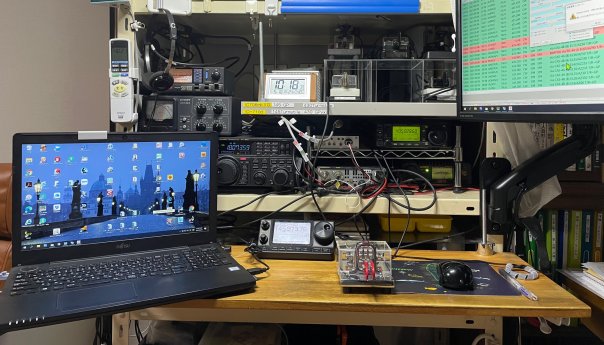
(AFTER) It has become 10cm wider in the front.
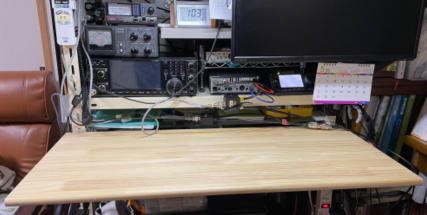
Using this leftover tabletop material, I tried to make a desktop for use in a car. I had already decided what I was going to put on it, so fortunately it didn’t take up much space and wasn’t too heavy. – Radio = IC7100 panel unit – Computer = ASUS E210MA (11.6in) – Telephone key = SUR Kobo CIR-45D. It was very simple.
(1) First, cut the tabletop in half. (Depth 30cm x Width 45cm)
(2) Drill slit-shaped holes in it. That’s it. However, these slits are not drilled perpendicular to the board. The handlebars will be “inserted” into these slits, so the holes are drilled at an angle to match the angle of the handlebars. First, drill several guide holes at an angle, then connect them with a handsaw. This is where my experience of machining vacuum tube chassis came in handy. (I was a poor boy at the time and didn’t own a reamer or hand nibbler….)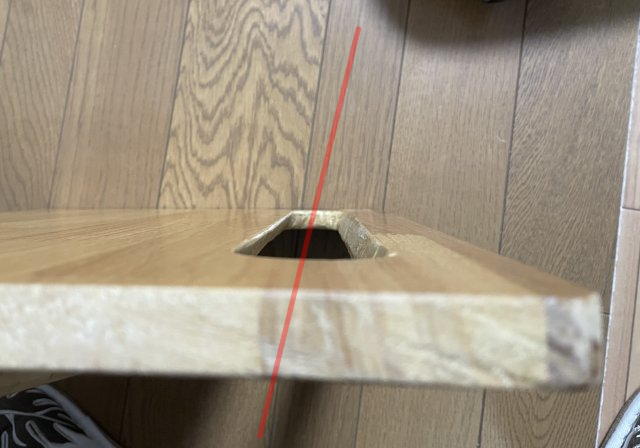
Simply inserting this into the steering wheel will do just fine as a table, but it is a bit soft and I am a bit worried that it might leave marks on the urethane steering wheel. So I made a “support rod” using parts that I had cut out the slits from and that I was going to throw away.
Make a cutting board to form a T-shape and attach it to the back of the board with velcro tape. Chamfer the edges with a file and cutter, then paint with clear varnish to create a mobile desktop board. It somehow reminds me of a bread cutting board.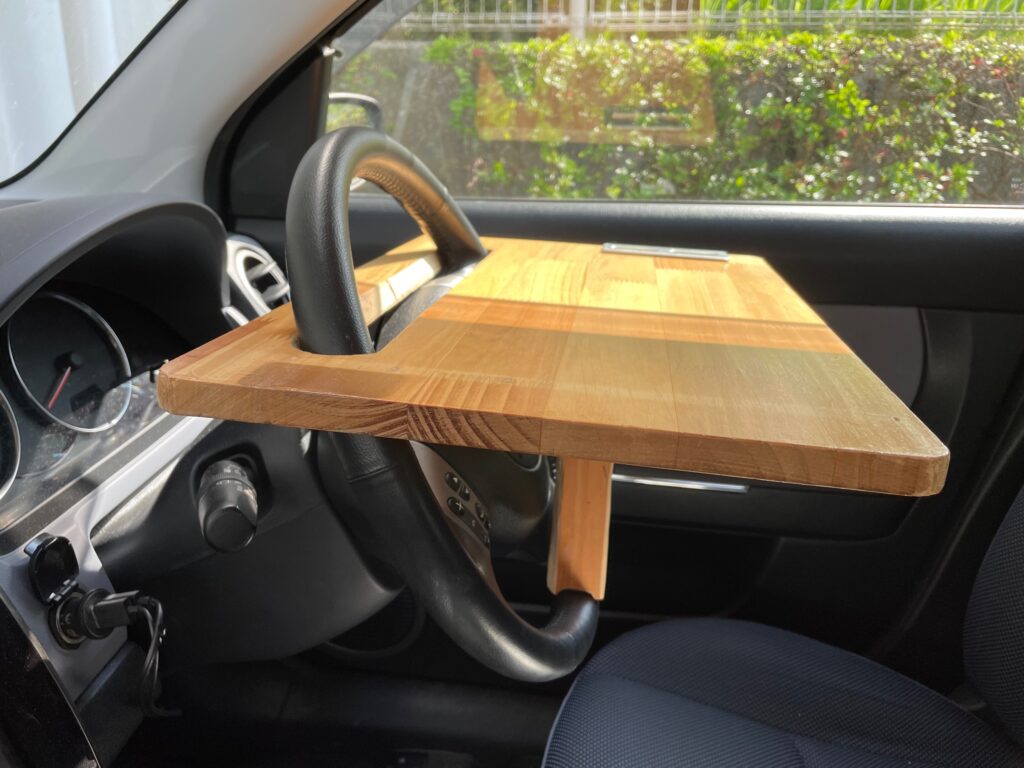
The key is to fit it in a way that the horn doesn’t honk while I’m using it.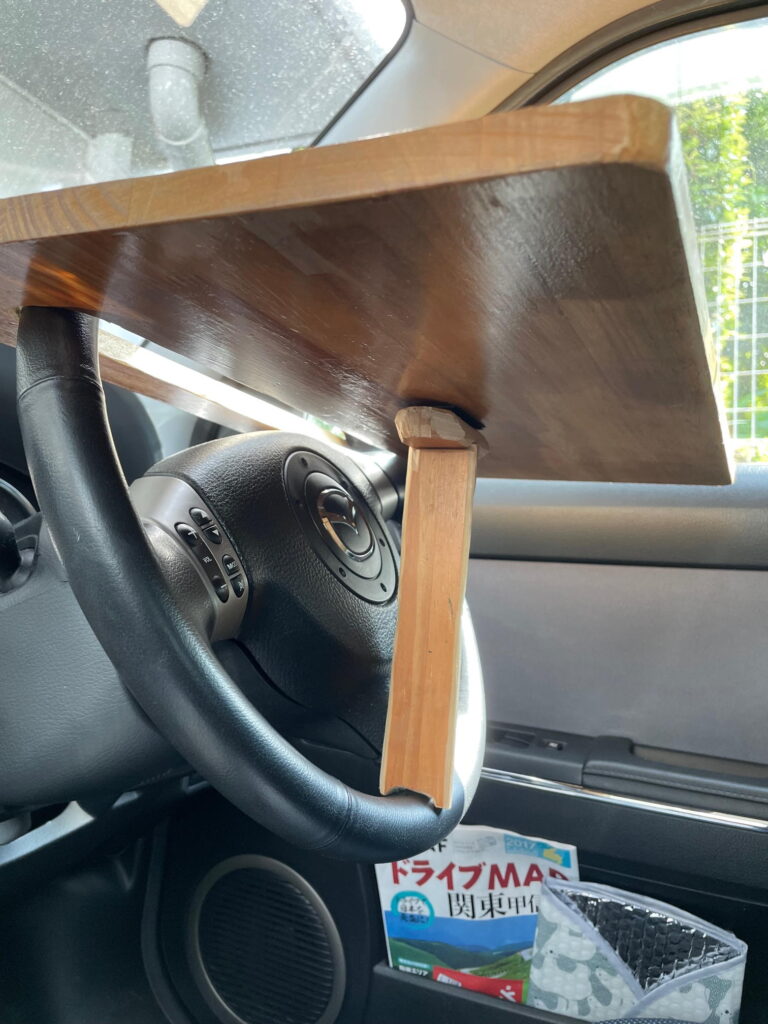
This is what it looks like looking up from below. When in use, lock it in place with the handle slightly turned. This is what it looks like when not in use. Store it in the slit with masking tape or something similar.
If you attach the joint parts of the angle shelf with double-sided tape, the CIR-45D key will snap into place with its strong magnet.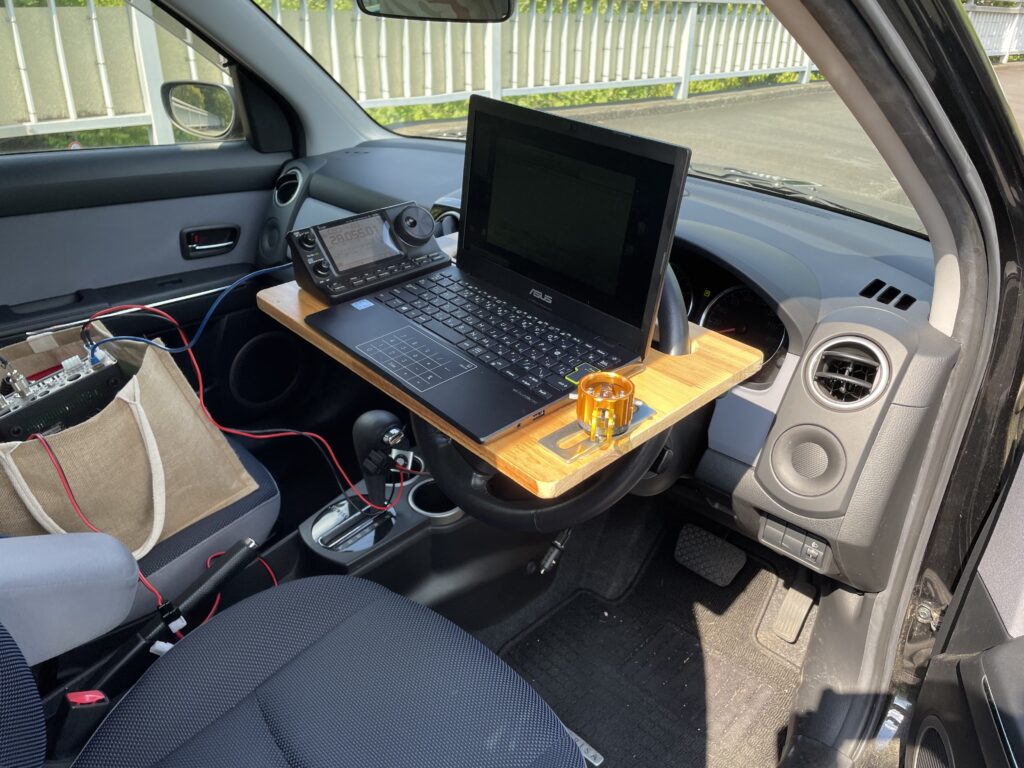
This was very helpful as the rig is a separate IC-7100. In the photo, the total load weight is about 1.6 kg.
Now, even if I move around by car and send a CQ by telegraph, I can respond without any hassle. (2022.4.29)
(2024.8) I went to “Three Coins” (300yen general store) recently and they were selling a plastic stand that was almost identical to this one. (They should have told me earlier… I wonder if they copied me?)
→Back to Index